| Availability: | |
|---|---|
| Quantity: | |
Introduction:
This is a Horizontal Line Post Insulator, a fundamental component in modern 11kV overhead power distribution systems. Unlike suspension insulators that hang vertically, this is a post insulator designed to be mounted horizontally on a structure. Its primary functions are to provide mechanical support for conductors, buses, or equipment terminals while simultaneously ensuring electrical insulation between live parts and the grounded support structure (e.g., a cross-arm or pole).
Its composite construction, featuring a fiberglass-reinforced epoxy rod (FRP) core and a silicone rubber housing, offers superior performance and longevity compared to traditional porcelain or glass insulators.
A typical application of a horizontal post insulator supporting a conductor on a distribution pole.
Product Size:
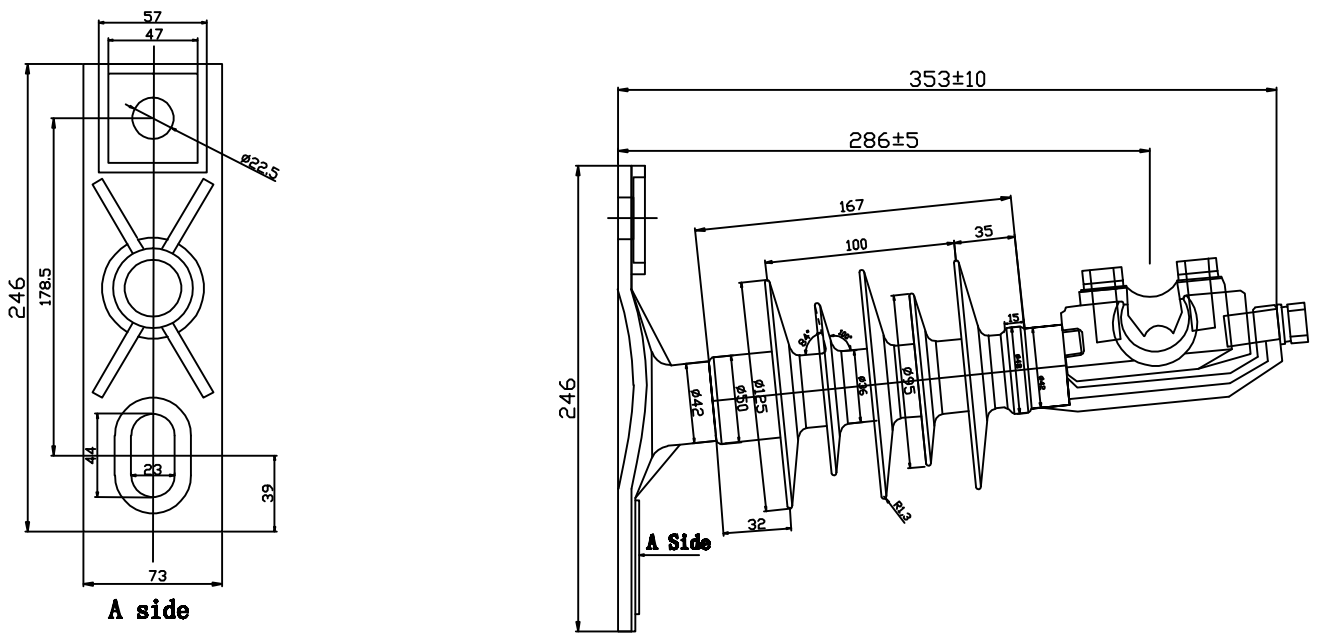
Specifications:
Product Type | Dimensions | Mechanical | Electrical | |||||||
Height | Mini Dry | Mini | Diameter | Number of | Diameter | Rated bending | Rated Voltage | Lightning | Power | |
FZSW-11-10 | 285 ±10 | 180 | 500 | 30 | 5 | 125/95 | 10 | 11 | 150 | 80 |
Order Information: | ||||||||||
Parameter Introduction:
Rated System Voltage: 11 kV (Designed for medium-voltage distribution networks.)
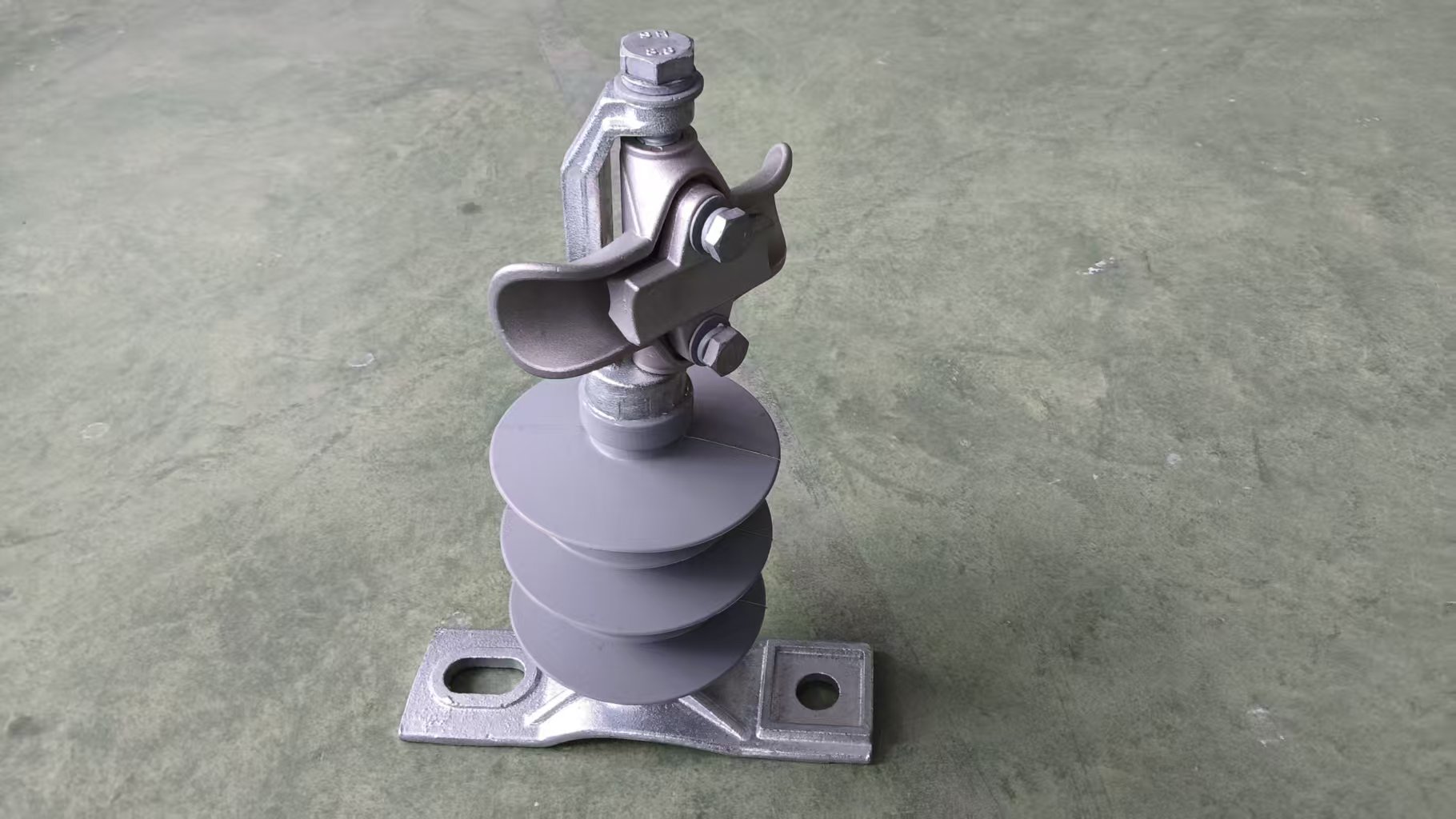
Rated Mechanical Load (Failing Load): 10 kN (Approximately 1,000 kgf. This indicates its high strength to withstand the weight of the conductor, wind pressure, and ice loading.)
Number of Sheds: 5 (The umbrella-shaped protrusions that increase the surface leakage path.)
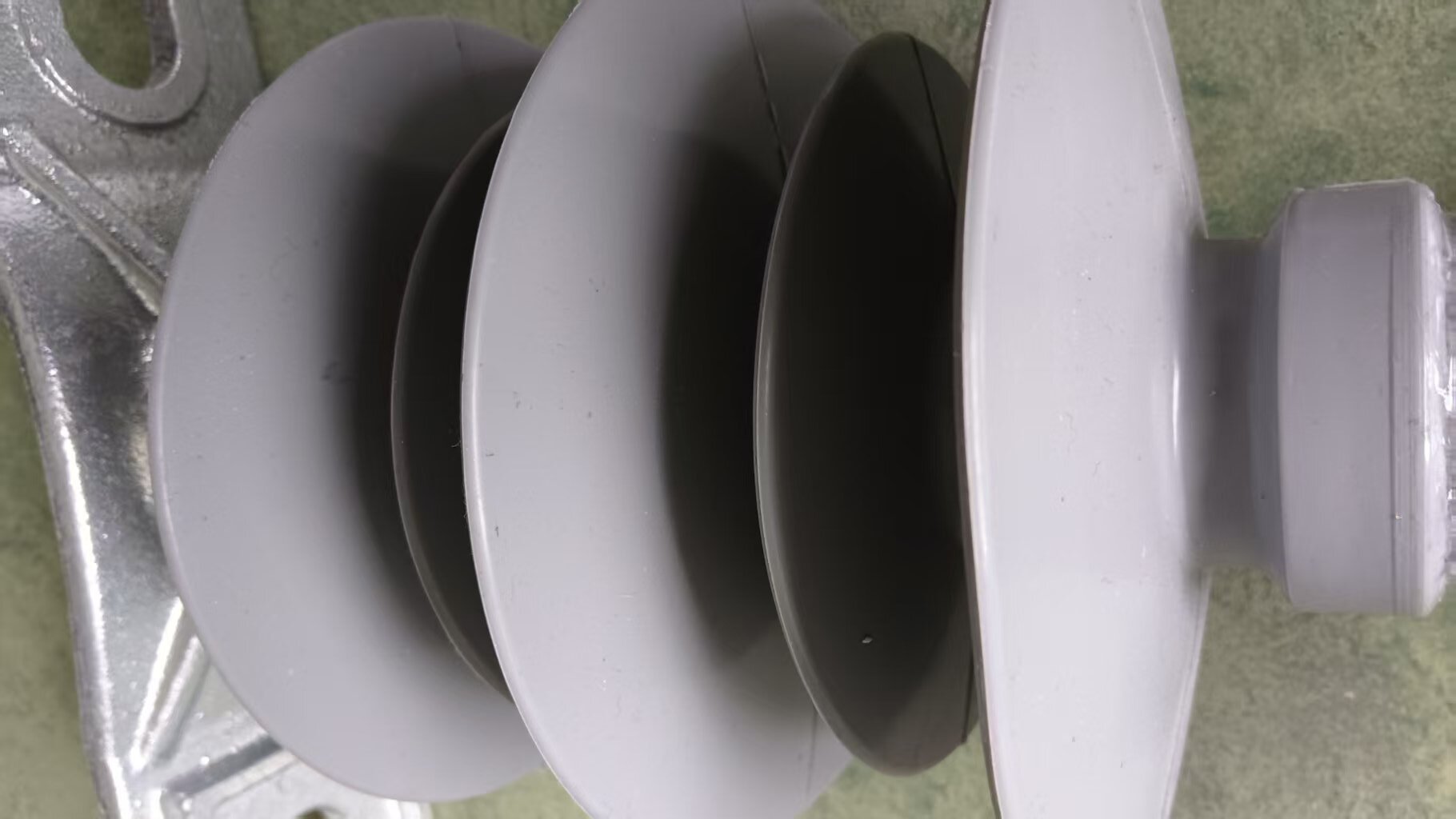
Creepage Distance: 500 mm (The total path length along the silicone insulator's surface between the metal end fittings. This is a critical parameter for preventing electrical flashover in polluted or wet conditions.)
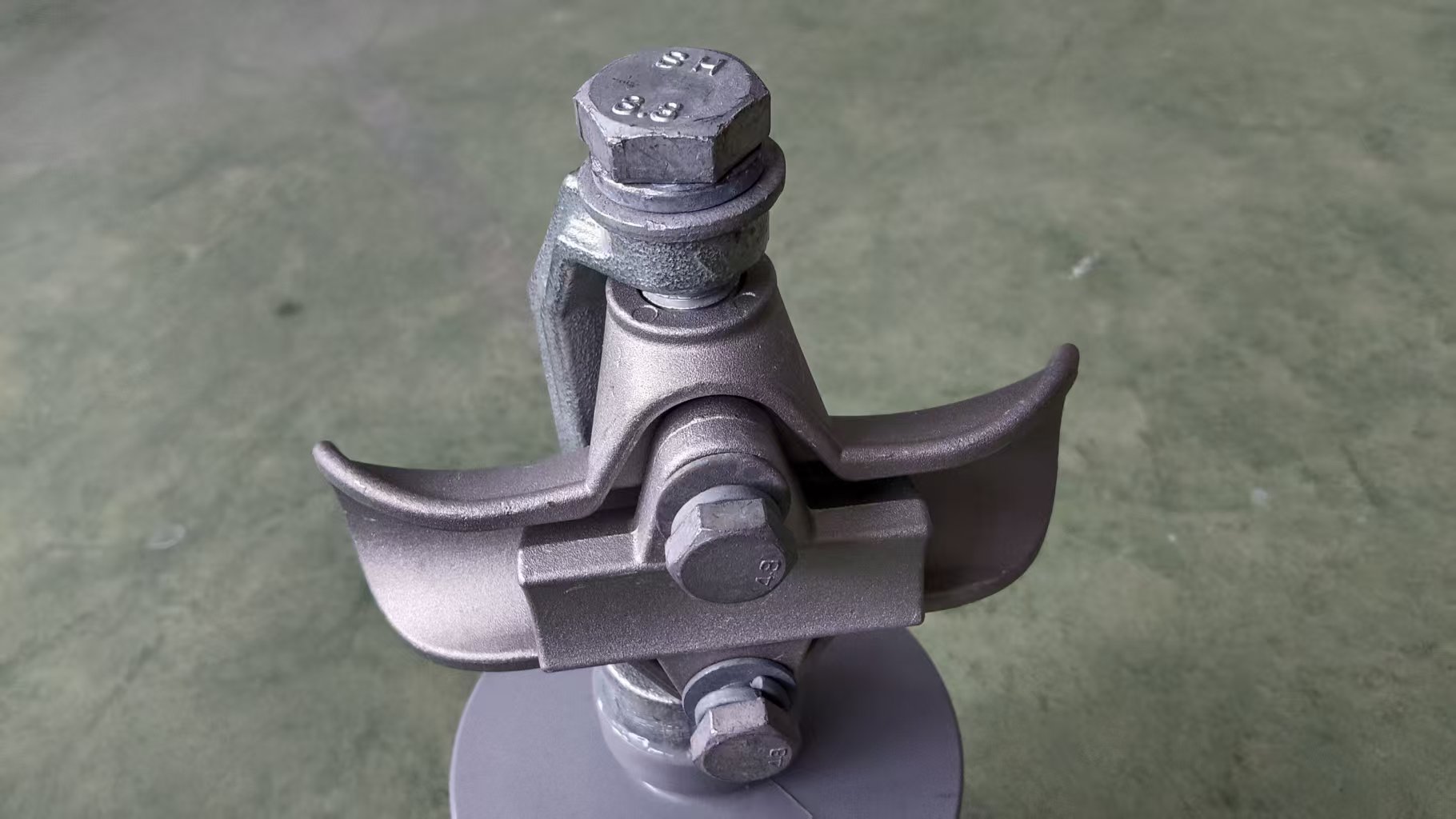
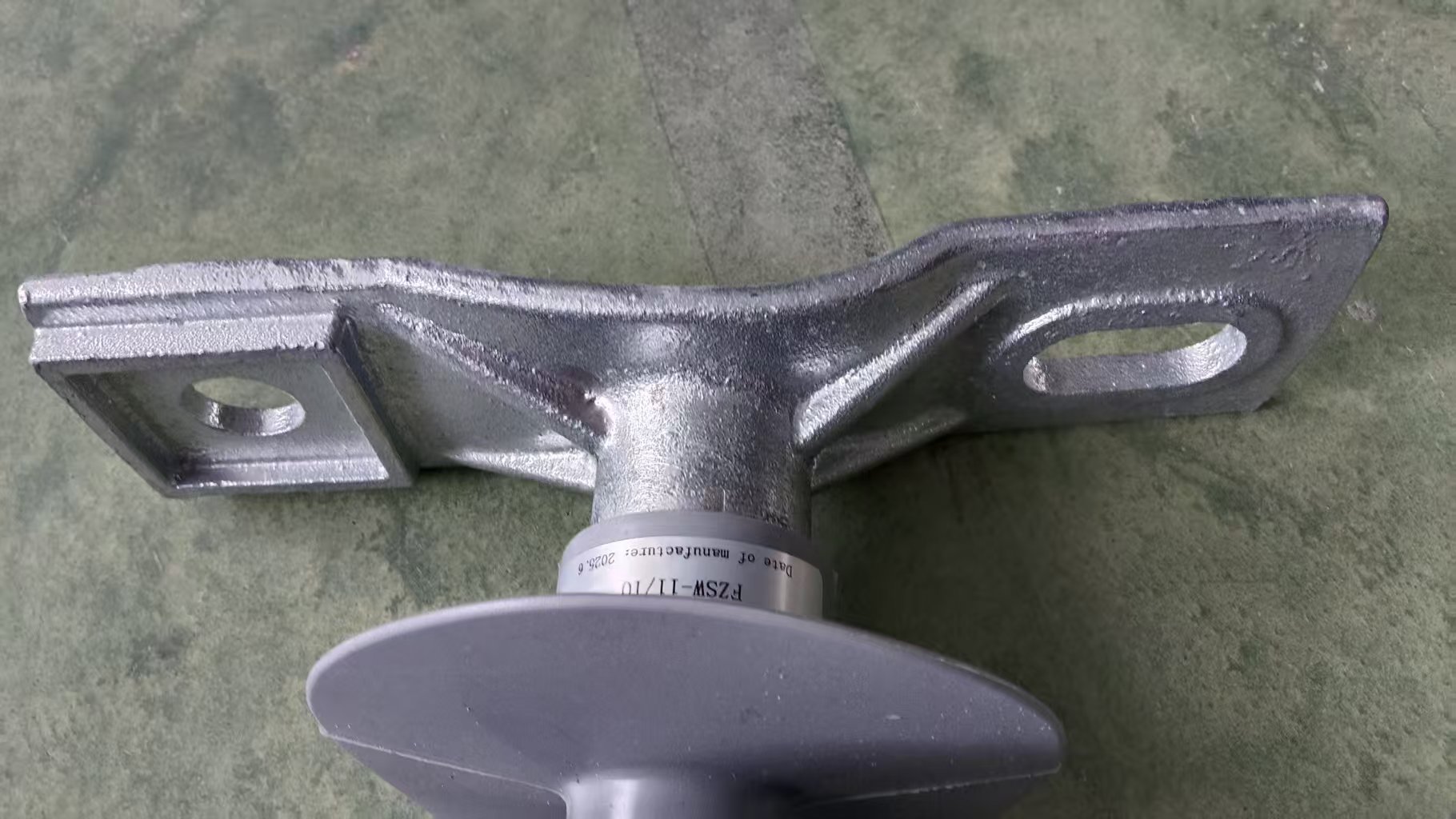
Color: Grey (A common color for silicone rubber housings, often containing UV inhibitors to prolong service life.)
Type: Horizontal Post (Indicates its mounting orientation and application.)
Key Characteristics and Advantage:
Horizontal Mounting Design: The key feature is its configuration. The robust metallic base plate with mounting holes allows it to be bolted directly onto a pole or cross-arm, projecting horizontally to support the conductor.
High Strength-to-Weight Ratio: The fiberglass core provides exceptional mechanical strength (10kN) while the polymer housing makes it significantly lighter than equivalent porcelain post insulators. This simplifies installation and reduces the load on supporting structures.
Excellent Hydrophobicity: The silicone rubber material naturally repels water. This prevents the formation of a continuous water film on the surface, drastically reducing the risk of leakage currents and flashover, especially during rain, fog, or in humid conditions.
Pollution and UV Resistance: The specified 500mm creepage distance achieved by the five sheds is designed to maintain performance in contaminated environments (e.g., industrial areas, coastal salt spray). The material is also highly resistant to degradation from ultraviolet radiation.
Vandalism and Impact Resistance: The composite material is much more resistant to damage from impacts or gunshots than brittle porcelain, leading to higher reliability and lower maintenance costs.
Specific Application Scenes:
This Line Post Insulator is versatile and is specifically chosen for these horizontal mounting scenarios:
Pole-Mounted Switchgear and Equipment: It is extensively used to support the live busbars or cable connections coming out of pole-mounted transformers, reclosers, sectionalizers, or load-break switches. Its horizontal post design provides the rigid support needed for these equipment terminals.
Line Support on Straight Poles: On straight sections of an 11kV distribution line, these insulators are used to support the conductor horizontally, acting as a sturdy anchor point that also provides the necessary electrical clearance from the pole.
Tension Applications for Angle or Terminal Poles: While not a full dead-end insulator, it can be used on angle poles where the line changes direction or terminal poles where the line ends. In these applications, it resists the mechanical tension of the conductor. Multiple units may be used in parallel for higher tension loads.
Substation Applications: Within small distribution substations, these insulators can be used to support and isolate low-voltage busbars or other equipment where a horizontal mounting configuration is required.

Company Tour:
 |  |
 |  |
 |  |  |
Introduction:
This is a Horizontal Line Post Insulator, a fundamental component in modern 11kV overhead power distribution systems. Unlike suspension insulators that hang vertically, this is a post insulator designed to be mounted horizontally on a structure. Its primary functions are to provide mechanical support for conductors, buses, or equipment terminals while simultaneously ensuring electrical insulation between live parts and the grounded support structure (e.g., a cross-arm or pole).
Its composite construction, featuring a fiberglass-reinforced epoxy rod (FRP) core and a silicone rubber housing, offers superior performance and longevity compared to traditional porcelain or glass insulators.
A typical application of a horizontal post insulator supporting a conductor on a distribution pole.
Product Size:

Specifications:
Product Type | Dimensions | Mechanical | Electrical | |||||||
Height | Mini Dry | Mini | Diameter | Number of | Diameter | Rated bending | Rated Voltage | Lightning | Power | |
FZSW-11-10 | 285 ±10 | 180 | 500 | 30 | 5 | 125/95 | 10 | 11 | 150 | 80 |
Order Information: | ||||||||||
Parameter Introduction:
Rated System Voltage: 11 kV (Designed for medium-voltage distribution networks.)

Rated Mechanical Load (Failing Load): 10 kN (Approximately 1,000 kgf. This indicates its high strength to withstand the weight of the conductor, wind pressure, and ice loading.)
Number of Sheds: 5 (The umbrella-shaped protrusions that increase the surface leakage path.)

Creepage Distance: 500 mm (The total path length along the silicone insulator's surface between the metal end fittings. This is a critical parameter for preventing electrical flashover in polluted or wet conditions.)


Color: Grey (A common color for silicone rubber housings, often containing UV inhibitors to prolong service life.)
Type: Horizontal Post (Indicates its mounting orientation and application.)
Key Characteristics and Advantage:
Horizontal Mounting Design: The key feature is its configuration. The robust metallic base plate with mounting holes allows it to be bolted directly onto a pole or cross-arm, projecting horizontally to support the conductor.
High Strength-to-Weight Ratio: The fiberglass core provides exceptional mechanical strength (10kN) while the polymer housing makes it significantly lighter than equivalent porcelain post insulators. This simplifies installation and reduces the load on supporting structures.
Excellent Hydrophobicity: The silicone rubber material naturally repels water. This prevents the formation of a continuous water film on the surface, drastically reducing the risk of leakage currents and flashover, especially during rain, fog, or in humid conditions.
Pollution and UV Resistance: The specified 500mm creepage distance achieved by the five sheds is designed to maintain performance in contaminated environments (e.g., industrial areas, coastal salt spray). The material is also highly resistant to degradation from ultraviolet radiation.
Vandalism and Impact Resistance: The composite material is much more resistant to damage from impacts or gunshots than brittle porcelain, leading to higher reliability and lower maintenance costs.
Specific Application Scenes:
This Line Post Insulator is versatile and is specifically chosen for these horizontal mounting scenarios:
Pole-Mounted Switchgear and Equipment: It is extensively used to support the live busbars or cable connections coming out of pole-mounted transformers, reclosers, sectionalizers, or load-break switches. Its horizontal post design provides the rigid support needed for these equipment terminals.
Line Support on Straight Poles: On straight sections of an 11kV distribution line, these insulators are used to support the conductor horizontally, acting as a sturdy anchor point that also provides the necessary electrical clearance from the pole.
Tension Applications for Angle or Terminal Poles: While not a full dead-end insulator, it can be used on angle poles where the line changes direction or terminal poles where the line ends. In these applications, it resists the mechanical tension of the conductor. Multiple units may be used in parallel for higher tension loads.
Substation Applications: Within small distribution substations, these insulators can be used to support and isolate low-voltage busbars or other equipment where a horizontal mounting configuration is required.

Company Tour:
 |  |
 |  |
 |  |  |